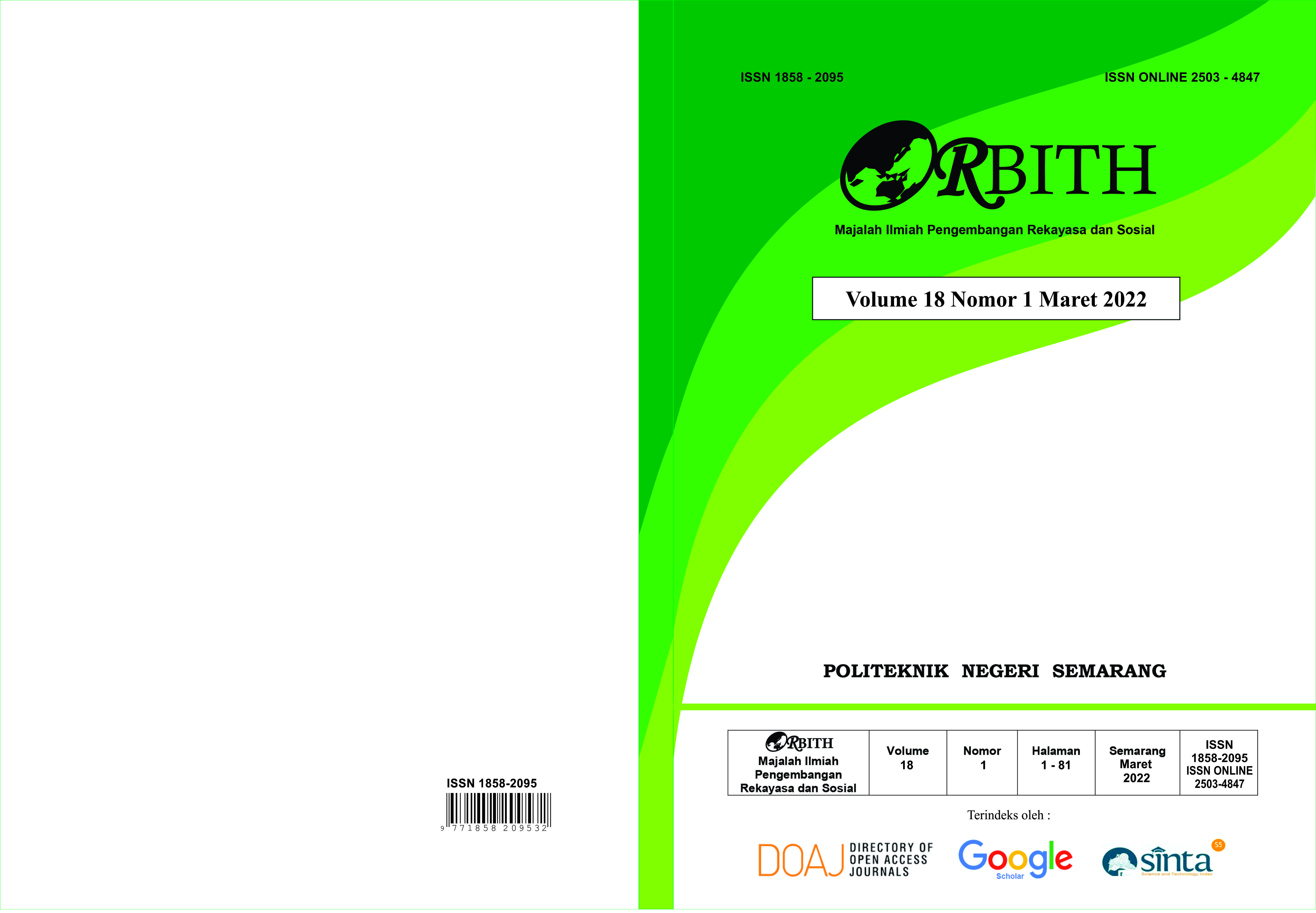EFEK PENGEREMAN DINAMIS TERHADAP KECEPATAN MOTOR TIGA FASA
DOI:
https://doi.org/10.32497/orbith.v18i1.3562Keywords:
motor induksi, pengereman dinamisAbstract
Seiring dengan perkembangan industri saat ini. Motor induki tiga fasa sering digunakan sebagai penggerak. Kelebihan motor ini mempunyai konstruksi yang sederhana, kokoh, harga relatif murah, serta perawatannya yng mudah. Akan tetapi ada permasalahan dalam memberhentikan motor ini, yaitu berhentinya lama. Hal ini akan menyebabkan waktu tunggu yang lama, sementara itu dapat mengganggu proses barikutnya. Tetapi hal tersebut dapat diatasi dengan menggunakan metode pengereman dinamis, dimana metode tersebut berfungsi untuk mengurangi kecepatan pada motor. Pengereman dinamis, waktu berhenti dan pengukuran arus motor induksi tiga fasa akan diupayakan dengan waktu yang relatif singkat tetapi tidak membuat motor panas. Pengujian pengereman dinamis motor dilakukan dalam kondisi tanpa beban dan berbeban. Parameter yang diamati adalah arus stopping dan perlambatan motor.
Kata kunci: motor induksi, pengereman dinamis
References
http://kurniawanpramana.wordpress.com/2011/09/25/generator-sinkron-1/
http://kurniawanpramana.wordpress.com/2011/09/26/Motor-sinkron-1/
http://rgpnd.blogspot.com/2013/02/pengertian-generator-sinkron.html#.Uyi6gs7TqYk
C.R. Nave, Department of Physics and Astronomy, Georgia State University. Howdoes an electric motor work? In: Hyperphysics, Electricity and Magnetism.2005
Integrated Publishing. Synchronised Motors, In: Neets, Module 01, Introduction to Matter, Energy, and Direct Current, Chapter 4, Alternating Current Motors. 2003.
Wijaya Mochtar. 2001. Dasar dasar Mesin Listrik. Jakarta : Djambatan 2000.
Peraturan umum Instalasi Listrik 2000 (PUIL2000), Desember. Jakarta.
Downloads
Published
Issue
Section
License
Authors who publish with this journal agree to the following terms:Authors retain copyright and grant the journal right of first publication with the work simultaneously licensed under a Creative Commons Attribution License that allows others to share the work with an acknowledgement of the work's authorship and initial publication in this journal.
Authors are able to enter into separate, additional contractual arrangements for the non-exclusive distribution of the journal's published version of the work (e.g., post it to an institutional repository or publish it in a book), with an acknowledgement of its initial publication in this journal.
Authors are permitted and encouraged to post their work online (e.g., in institutional repositories or on their website) prior to and during the submission process, as it can lead to productive exchanges, as well as earlier and greater citation of published work (See The Effect of Open Access).






